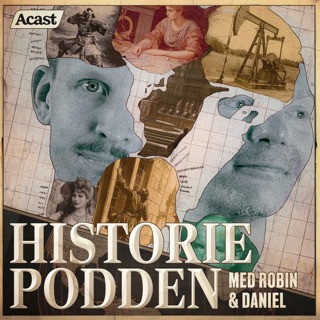
Episode 61 Preview
Ever sit down to take data and, as you're writing down all those pluses and minuses, tell yourself, "There's got to be a better way"? Well, I've got some good news and some bad news for you! Next week, we're talking with the newly-minted Dr. Carey about discontinuous data systems and the good, the bad, and the ugly about their use. But first, an errata chock full of excellent emails and a brief discussion of upstate New York over-the-air broadcasts. And Rob shares a geek fact. Articles for next episode: Cummings, A.R. & Carr, J.E. (2009). Evaluating progress in behavioral programs for children with autism spectrum disorders via continuous and discontinuous measurement. Journal of Applied Behavior Analysis, 42, 52-71. doi: 10.1901/jaba.2009.42-57 Carey, M.K. & Bourret, J.C. (2014). Effects of data sampling on graphical depictions of learning. Journal of Applied Behavior Analysis, 47, 749-764. doi: 10.1002/jaba.153
1 Aug 201810min

Episode 60 - Research Grab Bag V: Curse of Grab Bag
It's our most popular episode type: Grab bag! And by popular, I mean popular to us because we get to read whatever articles we want to! This week, Rob sits down at the ol' baby grand and plays a tune about stimulus equivalence, Diana neutrally praises the effort, and Jackie eats all the poison we left on the floor. Perhaps our most disjointed episode to date. Articles discussed this episode: Griffith, K.R., Ramos, A.L., Hill, K.E., & Miguel, C.F. (2018). Using equivalence-based instruction to teach piano skills to college students. Journal of Applied Behavior Analysis, 51, 207-219. doi: 10.1002/jaba.438 Weyman, J.R. & Sy, J.R. (2018). Effects of neutral and enthusiastic praise on the rate of discrimination acquisition. Journal of Applied Behavior Analysis, 51, 335-344. doi: 10.1002/jaba.440 Dancho, K.A., Thompson, R.H., & Rhoades, M.M. (2008). Teaching preschool children to avoid poison hazards. Journal of Applied Behavior Analylsis, 41, 267-271. doi: 10.1901/jaba.2008.41-267 If you're interested in ordering CEs for listening to this episode, click here to go to the store page. You'll need to enter your name, BCBA #, and the two episode secret code words to complete the purchase. Email us at abainsidetrack@gmail.com for further assistance.
25 Juli 20181h 28min

Episode 60 Preview
What's that sound coming across the misty moors? Some folks say a grab bag full of behavior analytic articles roams these dark plains, searching for a podcast to eat. Legend tells of a team of BCBAs who will tame the grab bag and bring its research to the ABA community. Might you be the ones the legend speaks of? Articles for next episode: Griffith, K.R., Ramos, A.L., Hill, K.E., & Miguel, C.F. (2018). Using equivalence-based instruction to teach piano skills to college students. Journal of Applied Behavior Analysis, 51, 207-219. doi: 10.1002/jaba.438 Weyman, J.R. & Sy, J.R. (2018). Effects of neutral and enthusiastic praise on the rate of discrimination acquisition. Journal of Applied Behavior Analysis, 51, 335-344. doi: 10.1002/jaba.440 Dancho, K.A., Thompson, R.H., & Rhoades, M.M. (2008). Teaching preschool children to avoid poison hazards. Journal of Applied Behavior Analylsis, 41, 267-271. doi: 10.1901/jaba.2008.41-267
18 Juli 201812min

Episode 59 - Puppies!
Though Rob may prefer to hit PAWS when it comes to talking about canines, Jackie and Diana have a howling good time on this week's episode all about dog behavior and behavior analysis. Wondering how functional analysis methodology can be used to treat dog challenging behavior? Or how shelter workers can actually be taught to train dogs on the cheap? Curious if Rob writes little stories about the research articles he reads? We answer all three of these tough questions in this week's episode. We're such RUFF-ians. Articles discussed this episode: Feuerbacher, E.N. & Wynne, C.D.L. (2016). Application of functional analysis methods to assess human-dog interactions. Journal of Applied Behavior Analysis, 49, 970-974. doi: 10.1002/jaba.318 Howard, V.J. & DiGennaro Reed, F.D. (2014). Training shelter volunteers to teach dog compliance. Journal of Applied Behavior Analysis, 47, 344-359. doi: 10.1002/jaba.120 If you're interested in ordering CEs for listening to this episode, click here to go to the store page. You'll need to enter your name, BCBA #, and the two episode secret code words to complete the purchase. Email us at abainsidetrack@gmail.com for further assistance.
11 Juli 20181h 9min

Episode 59 Preview
To celebrate America's birthday, we're finally giving Jackie her wish and doing an entire episode devoted to puppies. Specifically, dog behavior analysis. After a montage of dog pictures featuring sad Sarah Mclachan music, dry your tears to prepare for some summer reading assignments in Errata. Do you have ideas for ABA Inside Track episodes? Email us! Articles for next episode: Feuerbacher, E.N. & Wynne, C.D.L. (2016). Application of functional analysis methods to assess human-dog interactions. Journal of Applied Behavior Analysis, 49, 970-974. doi: 10.1002/jaba.318 Howard, V.J. & DiGennaro Reed, F.D. (2014). Training shelter volunteers to teach dog compliance. Journal of Applied Behavior Analysis, 47, 344-359. doi: 10.1002/jaba.120
4 Juli 201817min

Bonus Episode 9 - Autism Insurance Reform w/ Amy Weinstock
Not a day goes by that the treatment and care for children with autism and their families isn't in the news. Sadly, many recent headlines have focused on the alarming challenges that these families face in looking for effective treatment (i.e., ABA) even with the sweeping changes to insurance coverage of autism treatment signed into law in nearly all the U.S. Luckily, we had an amazing opportunity to speak to Amy Weinstock of the Autism Insurance Resource Center about this and other topics related to insurance for autism treatment including a discussion of her important role in bringing this legislation to Massachusetts, her ongoing work to support families in understanding their rights under the law, and what all BCBAs need to know about insurance. And if you still have more questions after listening, why not contact the awesome people at the Autism Resource Center yourself?
27 Juni 201832min

Episode 58 - School Refusal Behavior
Ah, the beautiful summer weather is finally upon us. And what better time to talk about how hard it is for some students to attend school. Is it bad teaching? Permissive parents? School anxiety? How the heck are we supposed to find out the function of school refusal behavior? Fortunately, Dr. Christopher Kearney and colleagues have been studying the assessment and treatment of school refusal behavior since the early 90's. And your pals here at ABA Inside Track are here to disseminate their research with our brand of deep discussion and tangents about Jackie's history of poor attendance due to Sailor Moon. Articles for next episode: Kearney, C.A. & Silverman, W.K. (1990). A preliminary analysis of a functional model of assessment and treatment for school refusal behavior. Behavior Modification, 14, 340-366. doi: 10.1177/01454455900143007 Kearney, C.A., Pursell, C., & Alvarez, K. (2001). Treatment of school refusal behavior in children with mixed functional profiles. Cognitive and Behavioral Practice, 8, 3-11. doi: 10.1016/S1077-7229(01)80037-7 Kearney, C.A., Chapman, G., & Cook, L.C. (2005). Moving from assessment to treatment of school refusal behavior in youth. INternational Journal of Behavioral Consultation and Therapy, 1, 46-51. Kearney, C.A. (2008). School absenteeism and school refusal behavior in youth: A contemporary review. Clinical Psychology Review, 28, 451-471. doi: 10.1016/j.cpr.2007.07.012 If you're interested in ordering CEs for listening to this episode, click here to go to the store page. You'll need to enter your name, BCBA #, and the two episode secret code words to complete the purchase. Email us at abainsidetrack@gmail.com for further assistance.
20 Juni 20181h 34min

Episode 58 Preview
So, when does, "Mommy, I don't wanna go to school" move beyond a frustrating way to start the day to a serious problem? Next week, we're talking all about the phenomenon of school-refusal behavior and what you can do to help. In the meantime we bring up some life-affirming quotes and get a glimpse at Rob's most prized possession. Articles for next episode: Kearney, C.A. & Silverman, W.K. (1990). A preliminary analysis of a functional model of assessment and treatment for school refusal behavior. Behavior Modification, 14, 340-366. doi: 10.1177/01454455900143007 Kearney, C.A., Pursell, C., & Alvarez, K. (2001). Treatment of school refusal behavior in children with mixed functional profiles. Cognitive and Behavioral Practice, 8, 3-11. doi: 10.1016/S1077-7229(01)80037-7 Kearney, C.A., Chapman, G., & Cook, L.C. (2005). Moving from assessment to treatment of school refusal behavior in youth. INternational Journal of Behavioral Consultation and Therapy, 1, 46-51. Kearney, C.A. (2008). School absenteeism and school refusal behavior in youth: A contemporary review. Clinical Psychology Review, 28, 451-471. doi: 10.1016/j.cpr.2007.07.012
13 Juni 201815min





















